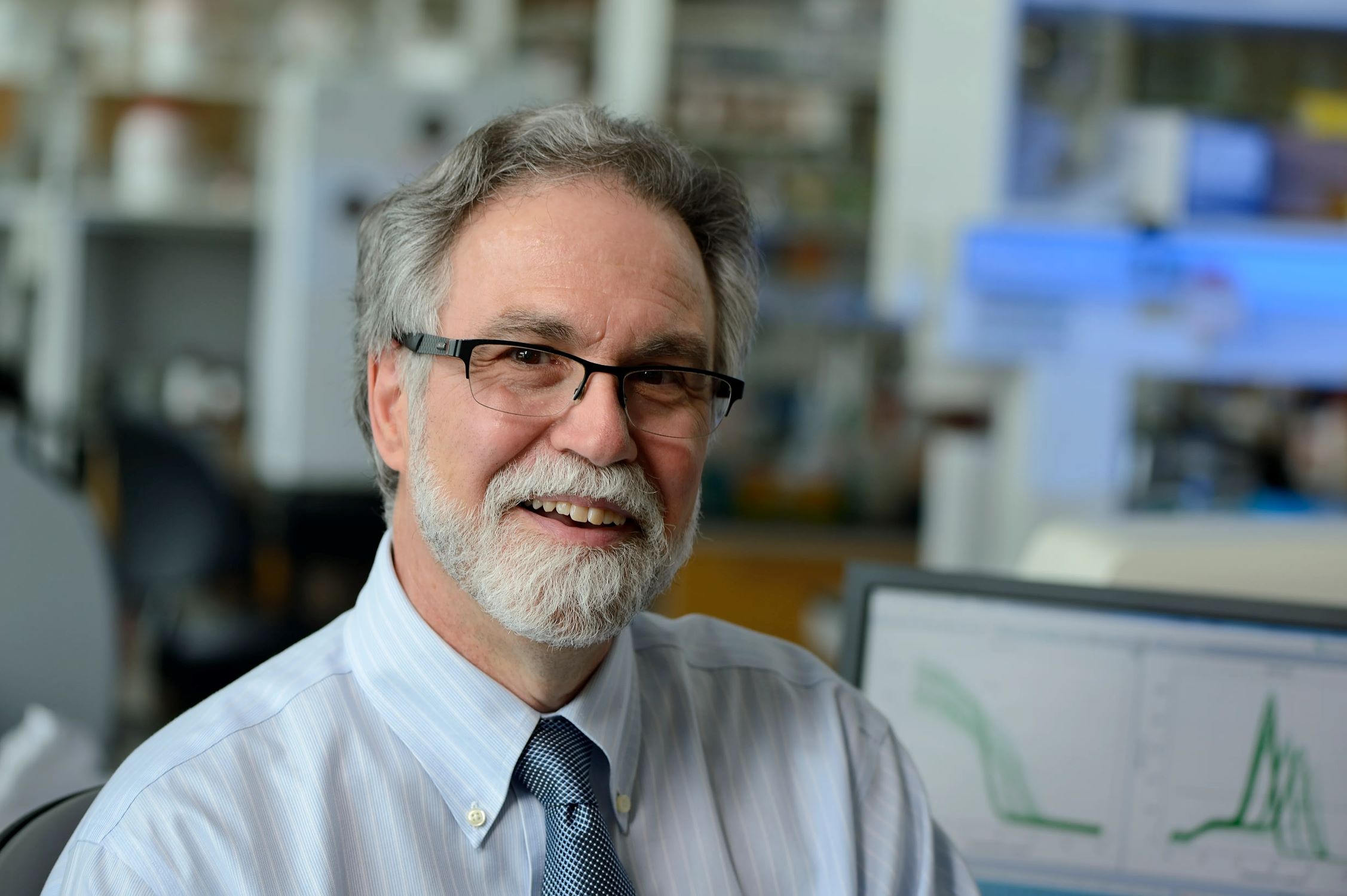
Dr. Gregg L. Semenza is a renowned scientist whose groundbreaking work has made significant contributions in the field of molecular biology and medicine. His tireless research has led to remarkable discoveries that have revolutionized our understanding of how cells adapt to low oxygen levels and the implications for various diseases.
In this article, we will explore 11 astonishing facts about Dr. Gregg L. Semenza’s life and his scientific achievements. From his early beginnings to his remarkable Nobel Prize-winning breakthrough, we will delve into the remarkable journey of this extraordinary scientist.
Get ready to be amazed by the incredible work of Dr. Semenza, as we uncover the remarkable insights he has provided in the field of molecular biology and the promising avenues these discoveries open for future medical advancements.
Key Takeaways:
- Dr. Gregg L. Semenza won the Nobel Prize for discovering how cells adapt to low oxygen. His work has big implications for cancer research and inspires future scientists.
- Dr. Semenza’s research on HIF-1 and hypoxia continues to make waves, offering hope for medical advancements and showcasing the power of scientific curiosity.
Nobel Prize in Physiology or Medicine
Dr. Gregg L. Semenza was awarded the Nobel Prize in Physiology or Medicine in 2019, along with William G. Kaelin Jr. and Peter J. Ratcliffe, for their discoveries of how cells sense and adapt to oxygen availability.
Groundbreaking Research on Hypoxia
Dr. Semenza’s research focused on understanding how cells respond to low levels of oxygen, known as hypoxia. His work uncovered the role of the hypoxia-inducible factor (HIF) pathway in regulating gene expression under hypoxic conditions.
Identification of HIF-1
One of Dr. Semenza’s most significant contributions was the identification of HIF-1, a key protein complex involved in the cellular response to low oxygen levels. HIF-1 plays a critical role in various physiological processes, including angiogenesis, metabolism, and cell proliferation.
Implications in Cancer Research
Dr. Semenza’s findings have major implications in cancer research. Dysregulation of the HIF pathway is often observed in various types of cancer, leading to tumor growth, angiogenesis, and metastasis. Understanding the molecular mechanisms behind HIF activation has opened new avenues for cancer therapy.
Early Career in Pediatrics
Before delving into groundbreaking research, Dr. Semenza completed his medical training in pediatrics. This background in pediatric medicine provided him with a strong foundation in understanding human health and disease processes.
Research at the Johns Hopkins University
Dr. Semenza conducted his influential research at the Johns Hopkins University School of Medicine. His work not only had a profound impact on the field of biology but also elevated the university’s reputation as a leading institution for scientific discoveries.
Collaboration with William G. Kaelin Jr. and Peter J. Ratcliffe
Dr. Semenza collaborated closely with William G. Kaelin Jr. and Peter J. Ratcliffe, sharing their expertise and resources to unravel the mysteries of cellular responses to hypoxia. Their collective efforts and groundbreaking findings led to the Nobel Prize recognition.
Mentor to Future Scientists
Dr. Semenza has not only made significant contributions to scientific knowledge but has also mentored and trained future generations of scientists. His guidance and expertise have inspired numerous researchers in their pursuit of groundbreaking discoveries.
Published Works and Scientific Impact
Throughout his career, Dr. Semenza has published numerous scientific papers in esteemed journals. His research has garnered widespread recognition and has been cited extensively by fellow scientists, further solidifying his scientific impact.
Global Recognition and Awards
Aside from the Nobel Prize, Dr. Semenza has received numerous awards and honors for his exceptional contributions to the field of biology. His work has been recognized globally, establishing him as a prominent figure in scientific research.
Continuing Research and Discoveries
Even after receiving the Nobel Prize, Dr. Semenza continues to push the boundaries of scientific knowledge. His ongoing research continues to uncover new insights into the cellular response to oxygen levels, offering hope for advancements in various medical disciplines.
Conclusion
Dr. Gregg L. Semenza is truly a remarkable individual whose groundbreaking work in the field of cellular and molecular biology has left an indelible mark on scientific research. Through his tireless efforts, he has unravelled some of the mysteries surrounding how cells respond to changing oxygen levels, leading to new insights into the treatment of various diseases.His discoveries, including the identification of hypoxia-inducible factors, have paved the way for advancements in cancer treatment, tissue regeneration, and understanding the fundamental mechanisms of cellular adaptation. Dr. Semenza’s innovative research has not only earned him numerous accolades, including the Nobel Prize in Physiology or Medicine, but has also inspired countless scientists to pursue their own groundbreaking discoveries.As we delve deeper into the intricacies of cellular and molecular biology, it is awe-inspiring to see the impact that one individual can have on the scientific community and the world as a whole. Dr. Gregg L. Semenza’s astonishing facts leave us with a sense of wonder and a renewed appreciation for the marvels of the natural world.
FAQs
Q: What are some notable achievements of Dr. Gregg L. Semenza?
A: Dr. Gregg L. Semenza is best known for his discovery of hypoxia-inducible factors and his research on how cells adapt to changing oxygen levels. He was awarded the Nobel Prize in Physiology or Medicine in 2019 for his contributions to this field.
Q: How have Dr. Semenza’s findings impacted the medical field?
A: Dr. Semenza’s research has provided crucial insights into the underlying mechanisms of various diseases, including cancer. His discoveries have opened up new possibilities for targeted therapies and have laid the foundation for advancements in regenerative medicine.
Q: What is the significance of hypoxia-inducible factors?
A: Hypoxia-inducible factors play a key role in the body’s response to low oxygen levels. They regulate the expression of genes involved in physiological processes such as angiogenesis, erythropoiesis, and metabolic adaptation. Understanding these factors has implications for the development of treatments for conditions like ischemic heart disease and anemia.
Q: How has Dr. Semenza’s work inspired other scientists?
A: Dr. Semenza’s groundbreaking work has served as a catalyst for further research in the field of cellular and molecular biology. His findings have sparked curiosity and fostered collaboration among scientists, leading to new discoveries and advancements in various disciplines.
Q: What qualities make Dr. Semenza’s research remarkable?
A: Dr. Semenza’s research is marked by its innovation, meticulousness, and relevance to real-world applications. His ability to translate complex scientific concepts into tangible advancements has set him apart and earned him widespread recognition from the scientific community.
Dr. Gregg L. Semenza's groundbreaking discoveries have paved the way for further exploration into the fascinating world of science. Delve deeper into the mysteries of oxygen sensing with Dr. Peter J. Ratcliffe's enigmatic journey. Uncover the astounding achievements of Dr. Shinya Yamanaka, another brilliant mind honored with the Nobel Prize in Physiology or Medicine. Explore the astonishing history and impact of Johns Hopkins University, the prestigious institution where Dr. Semenza continues his vital research. Embark on a captivating journey through the lives and work of these remarkable scientists, whose dedication and passion continue to shape our understanding of the world around us.
Was this page helpful?
Our commitment to delivering trustworthy and engaging content is at the heart of what we do. Each fact on our site is contributed by real users like you, bringing a wealth of diverse insights and information. To ensure the highest standards of accuracy and reliability, our dedicated editors meticulously review each submission. This process guarantees that the facts we share are not only fascinating but also credible. Trust in our commitment to quality and authenticity as you explore and learn with us.


